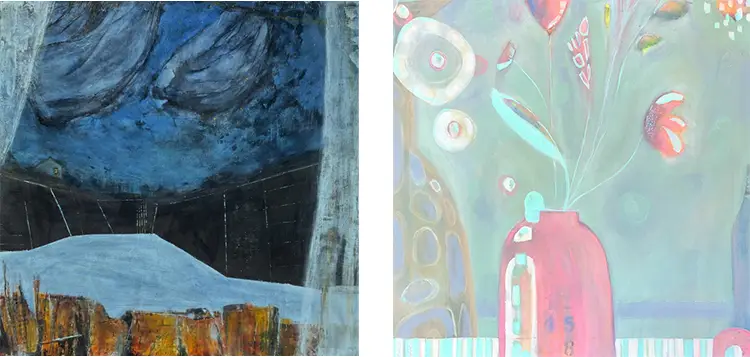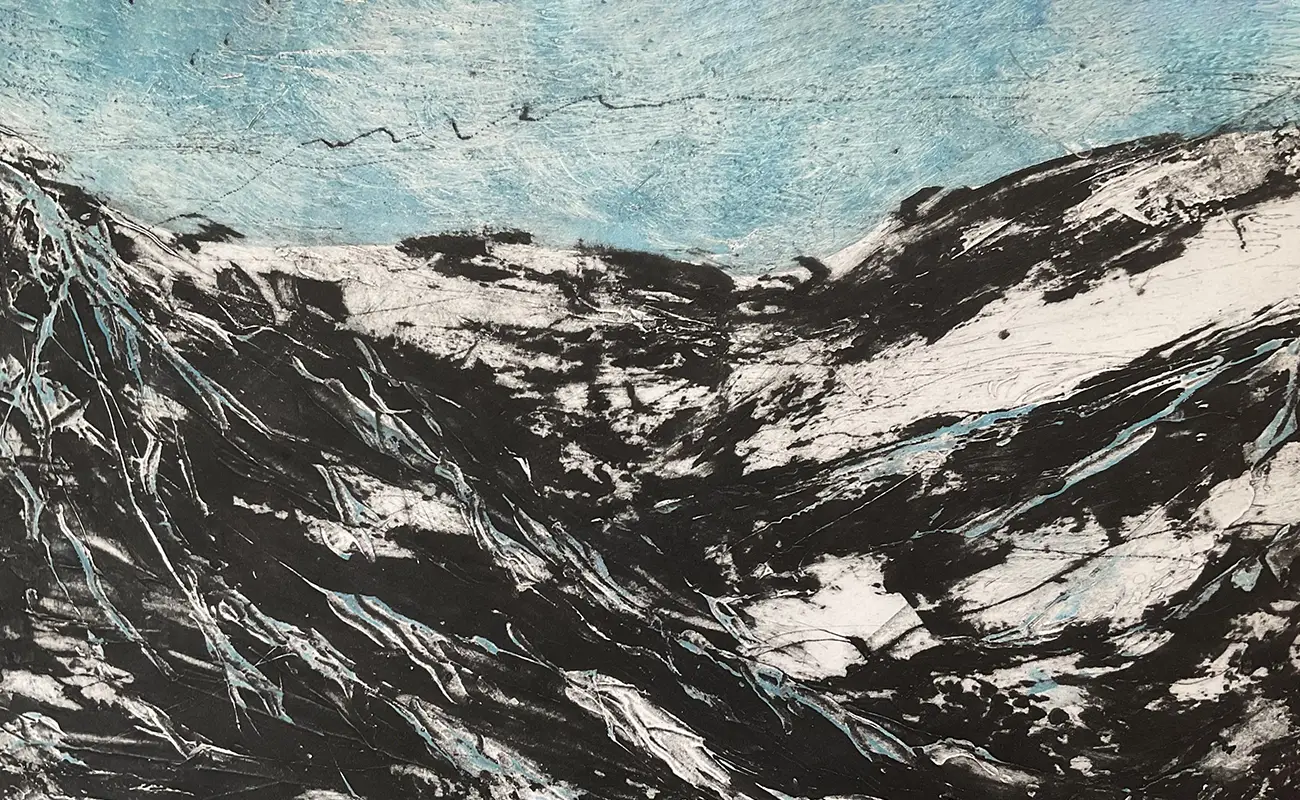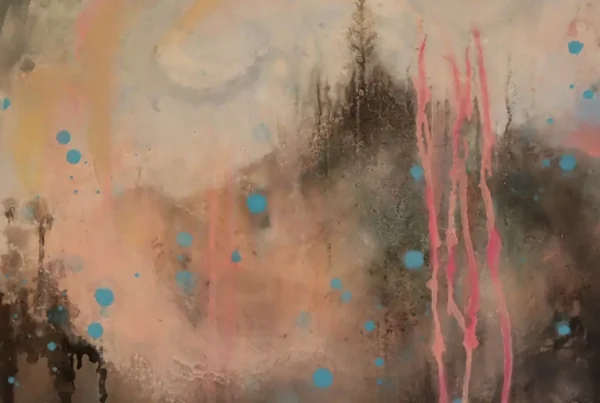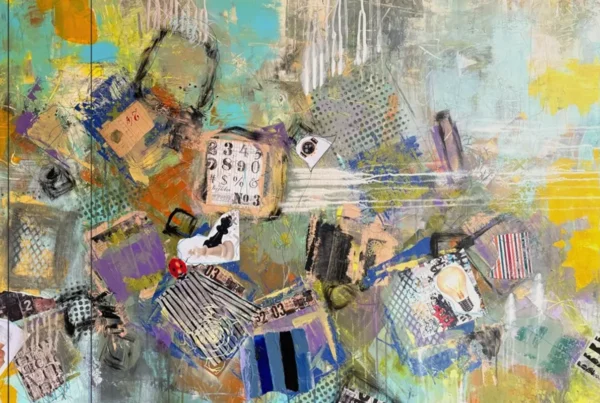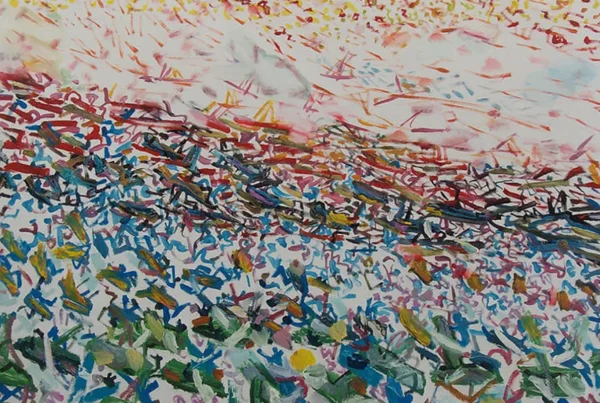“My art is filled with bold, vibrant hues—a celebration of the color I once missed.”
A Journey Reimagined: From Late Bloomer to Visual Storyteller
Marta Nowicka’s path to becoming a visual artist was anything but conventional. Based in New Jersey, this Polish-born painter, printmaker, and digital creator embraced her artistic identity after turning 40—a point in life when many feel their paths are already determined. Her relocation to the United States in 2019 marked a pivotal chapter, not just geographically but creatively. It was here that Nowicka’s personal exploration through art evolved from a quiet hobby into a profound vocation. Alongside her work as an intercultural coach supporting expatriates through life transitions, she discovered that art offered a parallel space of emotional exploration. These dual vocations—art and coaching—intertwine in her practice, both centered around transformation, personal narrative, and the nuanced layers of identity.
Growing up in communist Poland, Nowicka’s early surroundings were stark and colorless—environments defined by gray concrete and scarcity. These formative visual experiences became a lasting influence. The bright, cinematic scenes she glimpsed in Western films were worlds apart from her daily reality, planting a seed of longing that eventually found expression in her work. Her current palette is a vivid contrast to her childhood environment—each painting alive with exuberant hues, celebrating color not just as a visual choice, but as a reclamation of freedom and joy once absent. This emotional resonance with color is a signature of her aesthetic, offering viewers a vibrant counterpoint to the muted tones of her early years.
Before committing to visual arts, Nowicka expressed herself through various creative pursuits. Dreams of becoming a dancer or actress once held her imagination. Yet it was the emotional toll of living with chronic hip pain, beginning in her twenties, that eventually compelled her toward painting. This physical challenge reshaped her internal world, making space for deeper self-reflection. What emerged was a need to externalize these inner experiences, and visual art became the language through which she articulated them. Her work often reflects transitional states, echoing both physical limitation and emotional resilience—rendered in color, texture, and abstract form.
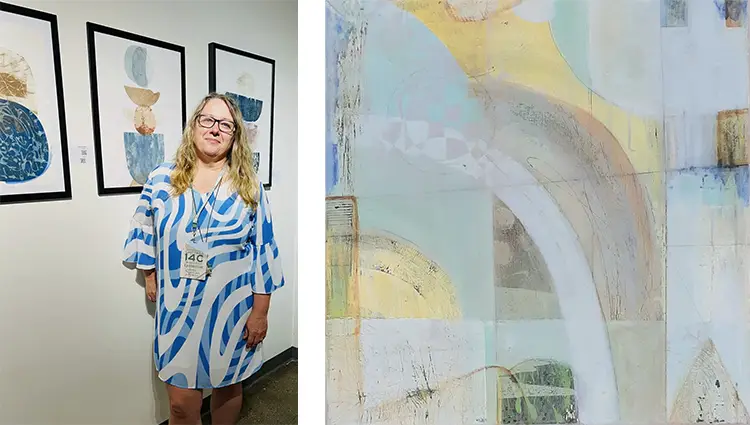
Marta Nowicka: Visual Abstractions Rooted in Inner Dialogue
Nowicka’s style thrives on abstraction, yet her compositions often hint at landscapes, memories, and shifting emotional terrains. She constructs these visual experiences layer by layer—combining color, shape, and transparency with an intuitive hand. Whether working with paint or prints, her process balances spontaneity with deliberate structure, creating artworks that evoke internal states rather than external subjects. These pieces may not represent specific places or people, but they brim with sensation: a sense of longing, a flicker of hope, or the quiet weight of expectation. Through this abstraction, she invites viewers to project their own emotional interpretations, crafting space for individual connection.
The themes Nowicka repeatedly explores—transition, belonging, and the complexity of self—are inextricably linked to her personal history and professional background. Her coaching practice informs her sensitivity to human stories and emotional nuance, enriching her creative lens. In many ways, her art functions as a mirror for inner reflection, both for herself and for those who engage with her work. Rather than provide answers, her compositions open conversations, inviting pause and presence. They speak to the moments between—between homes, between identities, between what was and what might yet be. In this ambiguity lies their emotional power.
Among her most poignant works is a painting titled Expectations. Initially a disordered composition of abstract forms, it lingered unfinished until she began to discern faint figures within the chaos. Trusting her instincts, she developed those emerging shapes into a more introspective image, balancing vibrancy with subtlety. The piece became a meditation on the often-unspoken pressures we carry—those placed upon us by society, family, and ourselves. For Nowicka, this artwork stands as a turning point, demonstrating her willingness to sit with unresolved work, listen deeply, and follow intuition to uncover emotional truth. It exemplifies the quiet revelations that lie beneath her practice.
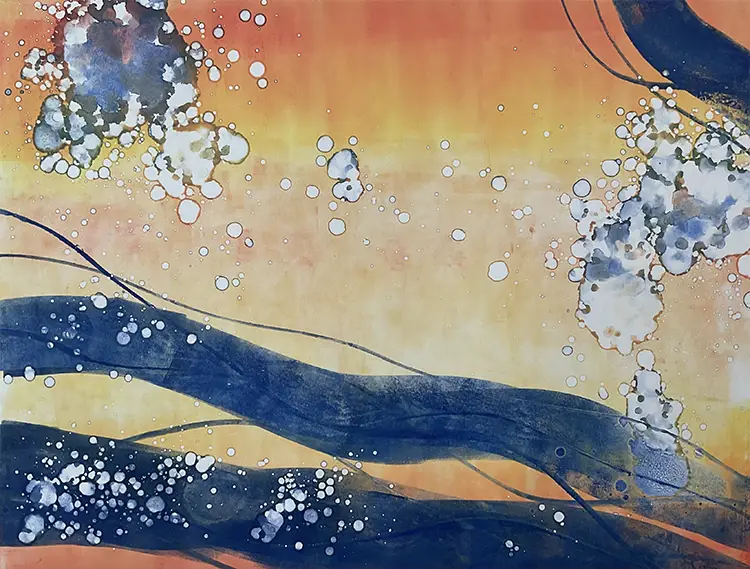
Between Ink and Imagination: Printmaking as Experimentation
While Nowicka began with oil painting, her practice expanded dramatically after discovering printmaking in 2020. Drawn to the immediacy and surprise the medium offers, she has since immersed herself in its diverse techniques—favoring monotypes, collagraphs, and carborundum prints. Her process often combines traditional methods like etching and chine collé with more experimental approaches, resulting in richly textured surfaces and unexpected visual dialogues. The tactile quality of printmaking speaks to her love of physical engagement in art-making, while the unpredictable outcomes mirror her openness to uncertainty and change.
This hands-on experimentation reaches new heights in her use of polymer clay to construct collagraph plates—a material rarely associated with printmaking. By incorporating it into her practice, Nowicka creates prints with pronounced textures and striking reliefs that disrupt flatness and invite closer inspection. These innovations exemplify her desire to push artistic boundaries, to blur the distinctions between media, and to challenge what printmaking is traditionally understood to be. Her studio becomes a site of alchemy, where unconventional tools lead to expressive possibilities.
Despite working from a modest basement studio with limited natural light, Nowicka has cultivated an environment that suits her spontaneous and tactile workflow. She surrounds herself with tools and materials within easy reach, accepting the creative mess as part of the process. Music—ranging from country ballads to cinematic scores—plays a crucial role in helping her enter a state of flow. Rather than resist distraction, she allows herself to shift in and out of focus, trusting that inspiration will return. This adaptive approach mirrors the broader ethos of her work: embracing imperfection, listening inwardly, and remaining open to discovery.
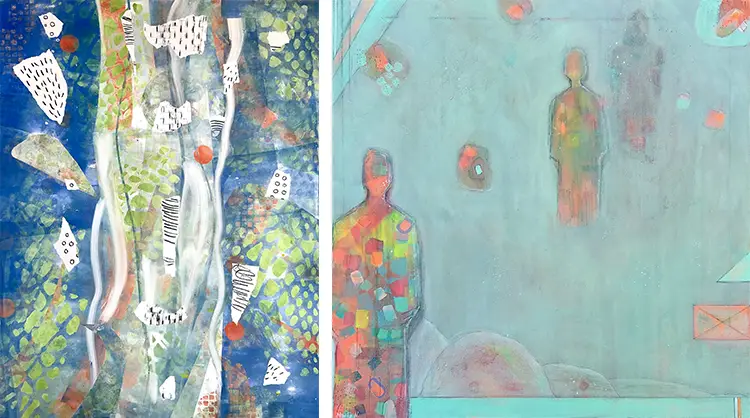
Marta Nowicka: Color as Liberation, Story as Form
Nowicka’s bold use of color is more than an aesthetic choice—it is a personal reclamation. What once was lacking in her visual environment during childhood has become a central feature of her creative expression. Her paintings and prints radiate with saturated pigments, often layered in ways that create depth and movement. Color becomes a voice—sometimes joyful, sometimes urgent—that conveys what language often cannot. The act of painting with brightness becomes, for her, an act of healing, a statement of presence, and an offering to others in search of light amid struggle.
Her influences are as layered as her works. From the structured abstractions of Cezanne and the emotional vibrancy of Gauguin to the spiritual formalism of Kandinsky, Nowicka draws from a lineage of artists who understood color and form as carriers of meaning. She also looks to her Polish heritage, finding inspiration in magical realism painters like Jacek Yerka and Rafał Olbiński, whose works weave dreamlike narratives into surreal visual compositions. In the field of printmaking, Dan Welden and Brenda Hartill stand out as mentors in spirit—their experimental approaches affirming Nowicka’s own instinct to challenge convention.
Looking ahead, Nowicka envisions expanding her polymer clay collagraph project into a cohesive body of work that merges tactile innovation with emotional depth. She dreams of creating a series that dissolves the boundaries between painting and print, abstraction and relief, tradition and experimentation. Such a project would crystallize her identity as a boundary-pusher—someone who, despite arriving to art later in life, has refused to play it safe. In every work she creates, she invites viewers into a space of reflection, resilience, and reimagination—an offering born from years of silence now transformed into color, shape, and story.
